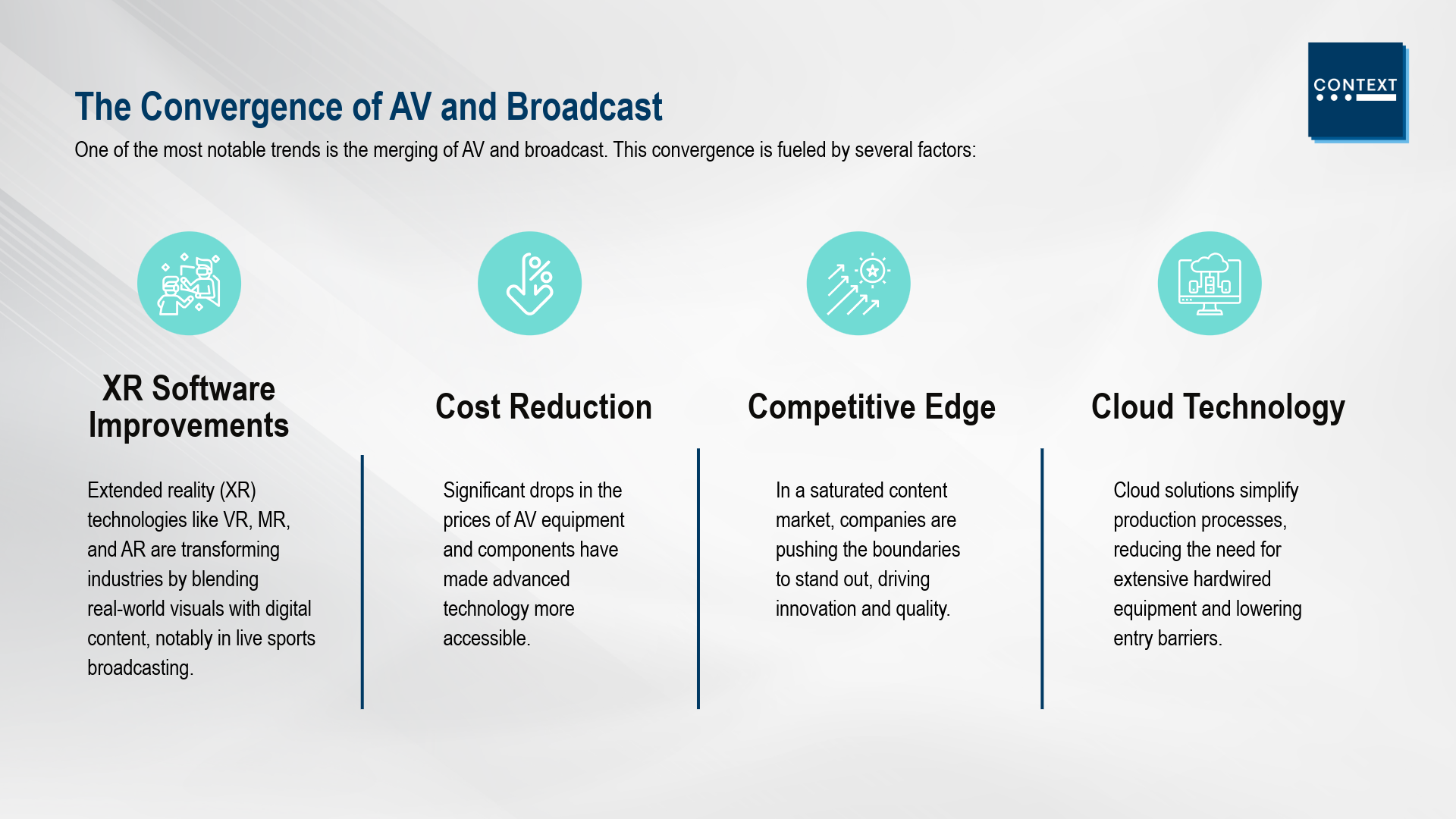The audiovisual (AV) industry has made a remarkable
recovery from the setbacks experienced during the pandemic. Investment
in AV has not only bounced back but has surpassed 2019 levels,
signalling a robust resurgence and an optimistic future.
Growing Verticals: Live Events, Media, and Entertainment
Several verticals within the AV industry are
experiencing significant growth, with live events, media, and
entertainment leading the charge. Despite this rapid expansion,
collaboration remains the primary driver, supported by other sectors
such as worship, military, education, and retail.

The Convergence of AV and Broadcast
One of the most notable trends is the merging of
AV and broadcast. This convergence is fuelled by several factors:
- XR Software Improvements: Advances
in extended reality (XR), encompassing virtual reality (VR),
mixed reality (MR), and augmented reality (AR), are
revolutionising how companies utilise their equipment. This
technology blend is increasingly evident in live sports
broadcasts, where real–world images are seamlessly
integrated with computer–generated content.
-
Cost Reduction: Significant drops in the
prices of AV equipment and components have made advanced
technology more accessible.
- Competitive
Edge: In a saturated content market, companies are
pushing the boundaries to stand out, driving innovation and
quality.
- Cloud Technology: Cloud
solutions simplify production processes, reducing the need
for extensive hardwired equipment and lowering entry
barriers.
Carbon Emission Considerations
As companies upgrade their AV equipment, they
weigh the balance between the emissions from AV operations and the
carbon footprint of in–person events. This consideration is crucial
in an era increasingly focused on sustainability.
Rise of Day Studios
A new trend in the AV industry is the emergence
of “day studios”, where creators can rent studio space for a day to
produce their content. This model provides flexibility and access to
high–quality production facilities without long–term commitments.
Future Growth and Challenges
During the recent UpStream event, Sean Wargo, the
VP of Market Intelligence at AVIXA, highlighted that “the AV market is
projected to reach $422 billion by 2029, with a compound annual growth
rate (CAGR) of 6.1%. Despite the high availability of equipment and
the resolution of supply chain issues, there is a notable shortage of
skilled AV professionals. Addressing this gap through training and
education is crucial.”
China remains the largest market for AV, with
India emerging as the fastest–growing market, reflecting the
significant roles of these BRICS nations in the industry.

Post–Pandemic Normalisation and Innovation
The AV market is stabilising after the
pandemic–induced disruption, setting the stage for long–term trends.
Interestingly, reduced budgets have catalysed innovative content
production methods, supported by technological advancements and cost reductions.
Empowering the Next Generation
Young aspiring AV specialists, some as young as
10, are now learning essential skills through platforms like
YouTube. This early exposure is nurturing the next generation of
content creators and AV professionals.
Broadcast–Quality Collaboration
Collaboration platforms, such as Microsoft Teams,
are evolving to deliver broadcast–quality calls and meetings, further
blurring the lines between traditional AV and broadcasting.
In summary, the AV industry is not only
recovering but also transforming, driven by technological
advancements, innovative production methods, and a focus on
sustainability. As the market continues to evolve, it promises
exciting opportunities and growth in the years to come.
Make sure to stay in the loop with
the latest AV trends and developments by following our LinkedIn CONTEXT
Europe page and filling in your details
below to attend our weekly
webinar.